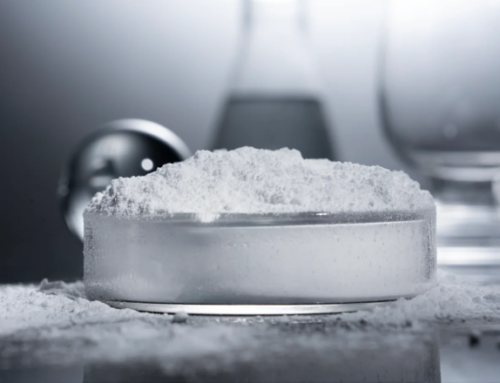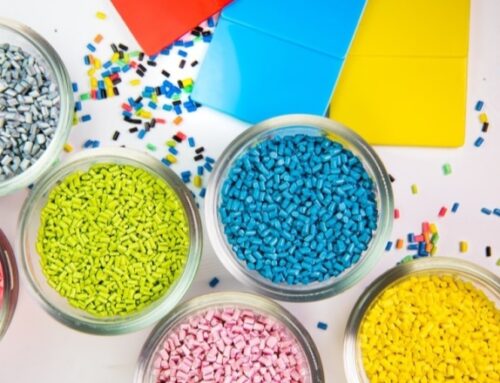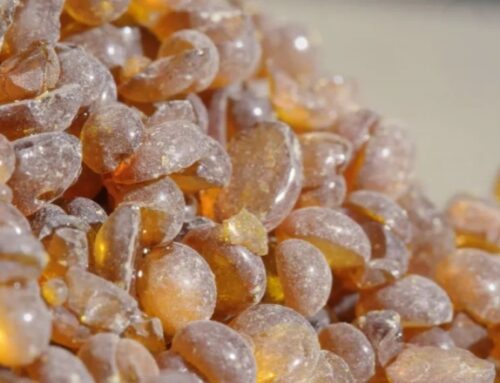Antioxidants refer to a type of chemical substance that can delay the oxidation and aging of high polymers. The presence of only a small amount of antioxidants can delay or inhibit the oxidation process of polymers, thereby preventing their aging and extending their lifespan. Antioxidants are mainly used in the fields of plastics and rubber.

Polymer materials are prone to oxidation reactions, leading to a significant decrease in their performance such as impact strength, flexural strength, tensile strength, and elongation, which affects the normal use of polymer material products. Antioxidants refer to chemical substances that can delay or inhibit the degradation of materials by atmospheric oxygen or ozone during polymerization, storage, transportation, processing, and use when present in small amounts in polymer material systems, thereby preventing material aging and extending its service life. Antioxidants are one of the most commonly used chemical additives in the manufacturing process of various polymer materials.
The development of antioxidants in China can be roughly divided into four stages.
The first stage, 1966-1978: mainly focused on solving the problem of antioxidant availability.
Firstly, a small-scale sample of antioxidant 1010 needs to be developed in the laboratory. The initially determined process route was divided into five major steps, and the research progress was very slow. It took about two years until the spring of 1969 to produce a few hundred grams of antioxidant 1010 as a small test sample. The use of phenol alkylation technology has initiated a new beginning in the domestic production of 26phenol and 24phenol. At the same time, the old process of highly toxic acrylonitrile has been improved by adopting an advanced addition route of 26phenol and methyl acrylate. Synchronize the synthesis process route of domestic antioxidant 1010 with that of Qiba Company.
In 1970, under the leadership of technical team leaders Xu Ruilin and Zhang Minsheng, Beijing Third Chemical Plant built a pilot plant with an annual output of ten tons of antioxidant 1010, and produced several tons of 1010 products. In 1971, it passed the pilot test results appraisal organized by the Science and Technology Department of the Beijing Municipal Bureau of Chemical Industry. The attending representatives unanimously agreed that the 1010 production process route developed by the scientific research workshop of Beijing Chemical Third Factory is mature and reliable, with qualified and stable product quality. It is recommended to invest in industrial large-scale production.
The third chemical plant established a preparatory group for the industrial production of 200 tons of antioxidant 1010 per year. After several twists and turns, the unit was completed in May 1979. In October of the same year, the first batch of domestically produced antioxidant products were successfully produced and sent to Yanshan Petrochemical Plant for trial use. To commemorate this day, the domestically produced antioxidant product is named KY7910. KY is the Chinese Pinyin prefix for antioxidant, and 7910 is October 1979.

The second stage, 1979-1989: Solving the product quality and production normalization problems of the first 100 ton antioxidant production plant in China.
The first step for antioxidant 1010 is to pass the quality control of industrial products. The main quality standards for the 1010 product of Swiss company Ciba Cargill in the 1970s were: product appearance: white powder, melting point: 119-121 ℃.
In the late 1970s, they added a new quality requirement for product transparency, which was 425nm ≥ 90% and 500nm ≥ 95%. Domestic polyolefin companies demanded that domestically produced antioxidant products keep up with the world’s advanced level in quality. In 1980, the transmittance of domestically produced antioxidant 1010 was only about 70%, and the huge difference can be imagined. At that time, the country vigorously promoted learning from Japan’s Total Quality Control (TQC) experience. In 1981, the quality of domestically produced antioxidant 1010 products reached the new standards set by Ciba Cargill.
The second level is the normalization of device production. Due to the unstable quality of the main raw materials such as phenol, isobutene, and methyl acrylate provided domestically at that time, such as phenol and isobutene with high water content, the conversion rate of alkylation reaction was low, sometimes even unable to react. The content of methyl acrylate was low, and the conversion rate and yield of the addition reaction were also very low. Therefore, the quality standards and process reaction conditions of many raw materials require multiple explorations and searches by engineering and technical personnel. At that time, the level of chemical equipment in China was also relatively low, such as poor sealing of reaction vessels, which seriously affected the normal production. Finally, static magnetic seals were used instead of dynamic mechanical seals to solve the leakage problems of material pumps and reaction vessels. In addition, due to insufficient understanding of the production laws of 1010 and the shortcomings in state-owned enterprise management, the equipment with an annual output of 200 tons always fails to meet the design requirements, and the output always hovers around 100 tons.
The product is far from meeting the domestic market demand. Yanshan Petrochemical has repeatedly sent people to urge for antioxidants, and even procurement personnel are stationed in the factory to demand goods. Sometimes the director of the polypropylene plant comes to personally urge for goods. It can be seen how scarce antioxidant 1010 products were at that time. The antioxidant units built by Liaohua and Lanhua are not in better condition than the third chemical plant. The country has to spend precious foreign exchange to import from abroad. At that time, the price of antioxidant 1010 was 100000 to 120000 yuan per ton. Domestic antioxidants sell for 100000 yuan per ton, filling the domestic gap and generating profits for the factory. In the 1980s and 1990s, the slogan of replacing imports with domestically produced products was the loudest at that time. In addition, by introducing advanced enterprise management experience from abroad and linking bonuses with production, the production of antioxidant 1010 finally reached the design level in 1989, with an annual output of 200 tons.
Due to the successful localization of antioxidants, Ciba Company has adopted a strategy of price competition, proactively reducing the product price from 100000 yuan per ton to 70000 yuan per ton, which is astonishing. This move immediately plunged domestic antioxidants into a huge economic and cost crisis.
In the mid to late 1990s, state-owned enterprises began to undergo restructuring, resulting in employee layoffs. By around 2000, all production of antioxidants in state-owned enterprises had ceased. One of the main reasons for the high cost of state-owned antioxidant products at that time was low labor productivity. Based solely on the number of workers in the production workshop, the annual per capita production of antioxidants was around one ton. Today, Jiangsu Jiyi and Beijing Jiyi have an annual per capita production of 200 tons of antioxidants. At present, the sales price of antioxidant 1010 is around 33000 yuan/ton, which is two-thirds lower than the 100000 yuan/ton in the 1970s and 1980s. Private enterprises can still make profits, and the significant increase in labor productivity is one of the main reasons.
The main raw materials for antioxidant 1010, phenol and isobutene, have risen from over 3000 yuan per ton in the 1970s and 1980s to around 10000 yuan now, with a price increase of up to 300%! Another main reason why private enterprises can still survive is the advancement of production technology. The total yield of 1010 products has increased from less than 30% at the beginning to over 80% now, and energy consumption and auxiliary material consumption have also been significantly reduced. Taking 1010 crystal solvent as an example, at that time, the Third Chemical Plant consumed about three tons of purchased solvent for every ton of 1010 product produced. Today, it has become a commodity with high prices. The polyolefin industry in China and around the world is able to use such high-quality and affordable antioxidant products, thanks entirely to China’s reform and opening up and the dynamic competition of private enterprises.
The third stage, from 1990 to 2000: The rise of joint ventures and township private enterprises filled the gap in domestic antioxidant production and sparked a new wave of capacity expansion and consumption reduction.

In the 1990s, with the deepening of national economic reforms, foreign investors flocked in one after another, and a large number of private enterprises specializing in the production of antioxidants were born. The initial main raw materials were 26phenol and 24phenol, which were imported from the United States and Japan. Later, relying on domestically introduced talents and technology, localization was quickly achieved. At the same time, the auxiliary antioxidant 168626 and main antioxidant of phosphite lipids were developed, and new products such as composite antioxidant 2152259225900 were added to 10763114, filling the gap in domestic industrial production of similar products. The cost-effectiveness of antioxidants immediately became apparent, basically ending the situation where antioxidants used in China’s polyolefin industry needed to be imported.
In the mid-1980s, Swiss company Ciba Cargill attempted to establish an antioxidant production plant in China. It had discussed joint ventures with Beijing Chemical Third Plant, Shanghai Gaoqiao Petrochemical, Liaohua, Lanhua and other plants until 1995 when it established cooperation with Shanghai Gaoqiao Petrochemical to establish Ciba Gaoqiao Company. In 1998, a plant with an annual output of 3000 tons of antioxidant 1010168 was built and put into operation, forming a two strong competitive pattern with Jinhai Yabao. Subsequently, Yingkou became prosperous, and antioxidant companies such as Linyi Sanfeng also rose up to catch up, and market competition tended to turn white. The price of antioxidant 1010 has been declining, from 70000, 60000, 50000, 40000 per ton, to around 33000 yuan per ton today.
Despite losing its price advantage, Ciba Corporation has employed the killer move of quality advantage, increasing the transmittance of antioxidant 1010 products from 425nm ≥ 90% to ≥ 95%, and from 500nm ≥ 95% to ≥ 97%, immediately putting domestic antioxidant products in a passive position in terms of quality. In this regard, Jinhai Yabao has taken the lead in making breakthroughs by replacing alkaline catalysts with a new generation of non alkaline catalysts, resulting in a product transmittance of 98% or even double 99%, exceeding the latest quality standards of Qiba Company and firmly establishing a foothold in product quality. After 2000, China formed a four strong competition among Jinhai Yabao, Shanghai Qiba, Yingkou Fengguang, and Linyi Sanfeng. Among them, Jinhai Yabao is still the leader. Some small and medium-sized enterprises that emerged in the 1980s and 1990s to produce antioxidants gradually declined, and some disappeared. Although there are still some small and medium-sized antioxidant enterprises surviving tenaciously today, their situation will be very difficult under the gradual standardization of chemical enterprise management by the country, strict control of safety production conditions, and high environmental protection requirements.
The fourth stage, from 2002 to 2017: antioxidant production capacity exploded.
Shanghai Ciba Specialty Chemicals, Ningbo Jinhai Yabao. Although they are able to produce 26 phenols and 24 phenols on their own, due to cost and efficiency considerations, the insufficient part is not to expand production but to choose to purchase alkylphenol products from Beijing Jiyi Company. Jiyi Company also exports excess alkylphenol products to South Korea, Japan, Taiwan, India and other places. However, due to fierce competition in the domestic market and inadequate industry division of labor, some major customers have also started their own alkylphenol production facilities, which has had a huge impact on Beijing Jiyi Company. Therefore, Jiyi Company has decided to enter the antioxidant industry and fully participate in the domestic antioxidant market competition.
After 2008, Europe imposed strict restrictions on the heavy metal content in plastic additives, and the domestic plastic industry followed suit. The main requirement is that the heavy metal content is basically zero. However, the use of tin containing catalysts in the production of antioxidants in China has become a major problem. Relying on a strong technical team and self innovation capability, China quickly transforms its product catalysts to ensure that the internal quality of its antioxidant products meets the latest standards of the European Union.
In the fierce competition among domestic and international peers, it is gratifying that Jiyi Company has always maintained good cooperation and competitive relationships with Ciba Specialty Chemicals (now BASF) and Jinhai Yabao (now Saint Laurent).
The production of antioxidants in China has developed to the present day, and domestically produced antioxidants have become independent among the world’s additives. The development of the plastic additive industry will invest more funds and manpower in developing a new generation of safer, more environmentally friendly, green, and humane antioxidants, making specialized antioxidants and composite antioxidants more refined and excellent to meet the different needs of customers.
Domestic experts unanimously believe that in the next 30 to 50 years, there will be no development of superior main and auxiliary antioxidant products compared to antioxidant 1010168. Of course, some products may perform well in a single performance aspect, such as antioxidant 330 (1330) and 1790, which have excellent antioxidant properties, especially 330 has certain advantages in anti extraction and human absorption. However, they face huge environmental cost pressure in the production process, so they are expensive and cost-effective, and can only be applied to plastic products with special requirements. For example, antioxidant 626. Although the processing stability is better than 168, the hydrolysis resistance is poor, the storage period is short, and the price is also high, so it lacks a competitive advantage.
Article source: www.xianjichina.com
M&J International Trading Co., Ltd





